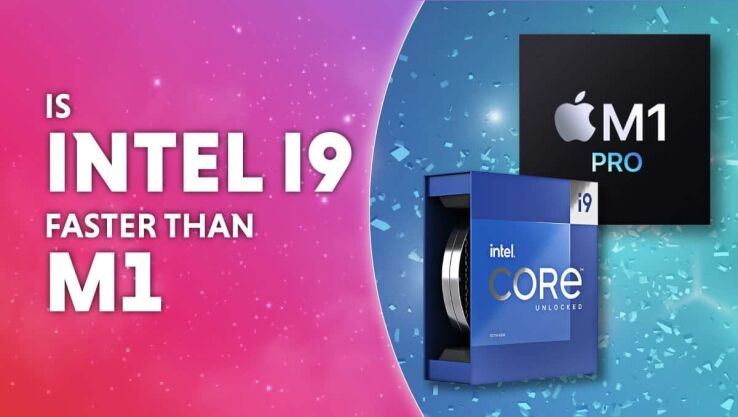Is Intel Core i9 better than M1?
Is Intel Core i9 better than M1? Let's find out

WePC is reader-supported. When you buy through links on our site, we may earn an affiliate commission. Prices subject to change. Learn more
Apple’s M1 chips and Intel’s Core i9 flagships are some of the strongest microprocessors out there today. Even though they have different CPU architectures and serve different operating systems, they are microprocessors nonetheless. Let’s see which of the two is better. In this article, we find out: Is Intel Core i9 better than M1?
Now Read: Best CPU for gaming 2023
How does the Intel Core i9 compare to Apple’s M1?
On paper, it seems like the Intel Core i9 has an overwhelming advantage because of its better specs. But Apple’s M1 chip is very well optimized for its operating software, MacOS, which allows it to deliver remarkable performance with its comparatively fewer cores and lower clock speeds.
Performance
Optimization can only get you so far, though. In this case, Apple’s M1 chip is outmatched. The new Core i9 processors simply have too overwhelming of an advantage in terms of specs. They would be more evenly matched against the M1 pro or Ultra chips.
Both the M1 chip and mobile Core i9 processors offer excellent performance on their respective platforms overall, but Core i9 comes out ahead in this category.
Power usage
One of the M1’s biggest selling points is its unbelievably low power usage, especially given its high performance. With a mere 10-watt TDP, the M1 chip consumes very little power, even under intense workloads, and preserves your MacBook’s battery life. It also doesn’t get hot, which is an issue commonly faced by laptop owners.
While Intel does tone down power usage in their mobile processors, the 13th generation mobile Core i9 CPUs still end up using a ton of power. With a max TDP of 157 watts, your laptop won’t last very long if you place it under load while it’s on battery. That is – if it doesn’t shut down to protect itself from overheating first.
What is Intel i9?
Core i9 is a CPU series that consists of Intel’s very best processors and their generational flagships. We’ve seen some incredibly powerful processors from the i9 series lately, especially the latest i9-13900 (and its variants).
Intel Core i9-13900K
Cores
24
Threads
32
Base speed
P-cores 3 GHz / E-cores 2.2 GHz
Boost speed
P-cores 5.8 GHz / E-cores 4.3 GHz
Cache
36MB
TDP
125 W / 253 W boost.
Intel recently released its 13th-generation mobile processors. The Core i9-13980HX is shaping up to be one of the strongest laptop processors we’ve seen so far. Here are its specs:
- Cores: 8 P.cores / 16 E.cores
- Threads: 32
- Boost clock frequency: P.cores 5.6 GHz / E.cores 4.0GHz
- L3 cache: 36MB shared
- Default TDP: 55 W / 157 W max.
- iGPU: Intel UHD Graphics
What is Apple’s M1?
An interesting similarity between the recent Core i9 processors and the M1 chip is the use of the LITTLE.big design.
- Cores: 4 P.cores / 4 E.cores
- Threads: 8
- Boost clock frequency: P.cores 3.2GHz / E.cores: 2.1GHz
- TDP: 10-15 W
- iGPU: 8-core GPU
The M1 chip is an 8-core processor with 4 performance cores and 4 efficiency cores, and a max clock speed of 3.2GHz. The M1 chip is astonishingly power-efficient, with a TDP of around 10 watts. According to Apple, the E.cores use up a tenth of the power the P.cores do.
Final Word
If we consider raw performance exclusively, the Intel i9 comes out on top. However, there’s much more that needs to be taken into account when dealing with mobile microprocessors. Power usage and thermals are two particularly important factors that the M1 addresses extraordinarily well, and Intel i9 doesn’t really do that at all.